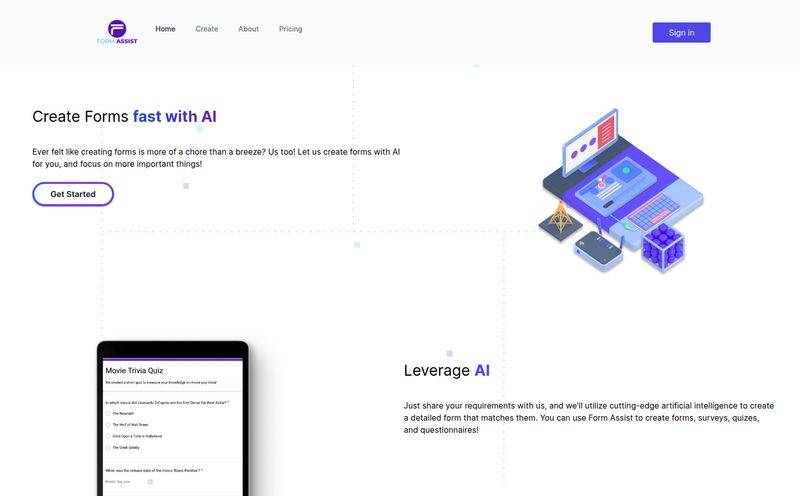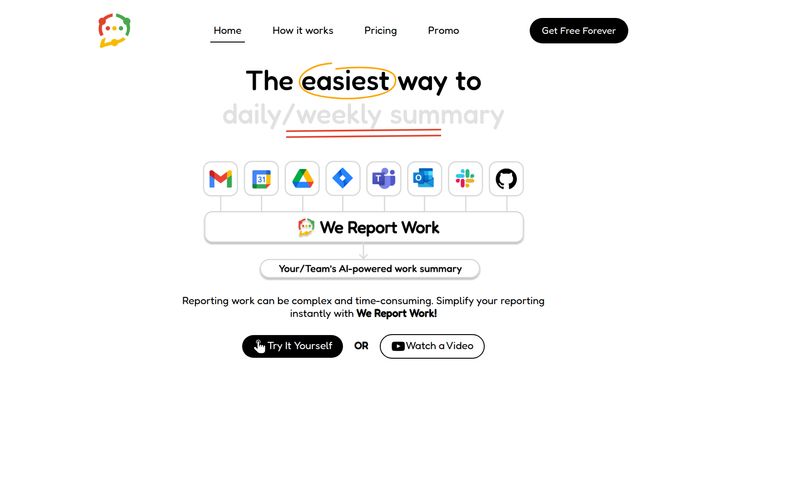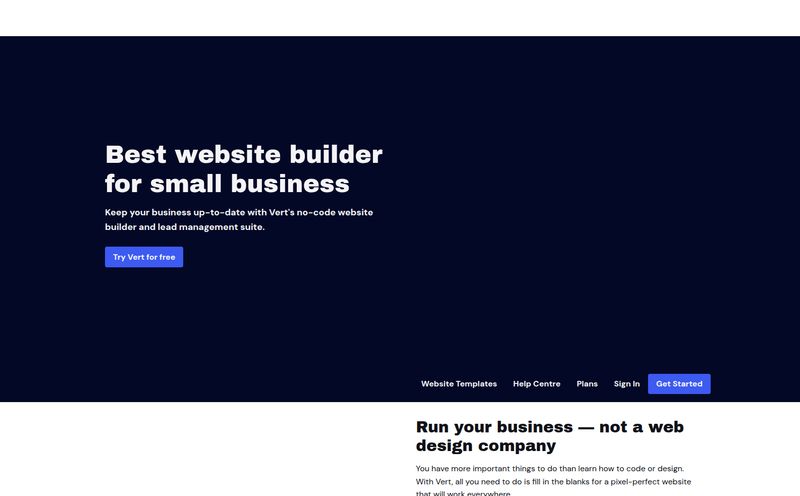Okay, let’s have a little chat. If you’ve spent any amount of time building on Firebase, you know the feeling. You’ve got this powerful, scalable, magical backend with Firestore, Auth, and Cloud Functions. It's brilliant. But then you need to actually… you know, look at the data. Or let a non-technical team member update a product description. Suddenly, you’re either giving them a terrifying level of access to the Firebase console or you're sinking a weekend into building a custom admin panel from scratch. I’ve done the latter more times than I care to admit.
It’s a classic developer trap. We build amazing things, but the internal tools to manage them often look like something out of the GeoCities era. For years, I’ve muttered to myself, “I just wish there was something like Airtable, but for my Firestore data.”
Well, someone was apparently listening. It’s called Rowy, and after playing around with it for the last few weeks, I’m convinced it’s one of the most exciting tools to hit the Google Cloud ecosystem in a long time. It’s not just a spreadsheet—it’s a command center.
So, What Exactly Is Rowy Anyway?
In the simplest terms, Rowy is a low-code, open-source platform that gives your Firebase project a beautiful, user-friendly spreadsheet interface. Think of it as a skin for your database. It connects directly to your Firestore collections and lets you view, manage, and even automate your data without writing endless scripts or building a clunky frontend.
It’s built directly on top of Google Cloud and Firebase, which means it’s not some third-party service where you’re shipping your data off to who-knows-where. You deploy it to your own Google Cloud project. Your data stays your data. This is a huge point for me, and for anyone concerned with data privacy and ownership.
It essentially turns this:
- Navigating the slightly sterile Firebase Console.
- Writing one-off scripts to bulk-update documents.
- Painfully building a bespoke admin UI for every single project.
Into a slick, collaborative, and dare I say, enjoyable experience.

Visit Rowy
The Spreadsheet UI is the Secret Sauce
The first time you connect Rowy to a Firestore collection, there's this little moment of magic. All your documents and fields just… appear. In a clean, editable grid. It feels instantly familiar, like slipping into a comfortable pair of shoes. You can click into a cell to edit a string, toggle a boolean, or pick a date from a calendar. It’s so intuitive, it almost feels too easy.
This isn't just about viewing data. You can create complex filters, sort by multiple fields, and create different views for different team members. Need a view that only shows user profiles created in the last week that haven’t completed onboarding? A couple of clicks, and you're done. Trying to do that in the standard Firebase console is… well, it’s not fun.
This is a game-changer for collaboration. You can finally give your marketing team access to update promotional content or let your support team view customer data without giving them the keys to the entire kingdom. The field-level permissioning is just icing on the cake.
It's Low-Code, Not No-Code. And That’s a Good Thing.
Here’s where Rowy really starts to pull away from the pack. A lot of tools are strictly "no-code," which sounds great until you hit a wall. You need to do one tiny thing that the platform doesn’t support, and you’re completely stuck. Rowy, on the other hand, embraces code. It’s a low-code platform.
What does that mean? It means you can create powerful backend logic right inside the Rowy interface using small snippets of JavaScript or TypeScript. These are deployed as Google Cloud Functions behind the scenes. For example, you can create a column that, when a new user document is created, automatically calls the SendGrid API to send a welcome email. Or a function that resizes an image when a URL is added to a field.
You get all the speed of a pre-built interface, with the power of custom code when you need it. It’s a brilliant balance. They even have derivative field types, which let you pull data from other fields and run some logic on them, kind of like a formula in Excel but powered by code.
My Favorite Parts of the Rowy Experience
After kicking the tires pretty thoroughly, a few things really stand out to me as a developer and an SEO consultant.
The Open-Source Foundation
I have a soft spot for open-source software. With Rowy, you can go to their GitHub, see exactly how it works, and even contribute. More importantly, because you host it on your own GCP instance, you’re not locked into their platform. If Rowy were to disappear tomorrow (I hope not!), your data and core functions would still be safe and sound in your Google Cloud project. That’s peace of mind.
Collaboration Without the Chaos
I mentioned this before, but it's worth repeating. Managing a single source of truth for a project is tough. Rowy provides a central hub where developers, PMs, and marketers can all work on the same data with granular access controls. The row-level auditing is fantastic, you can see who changed what and when. No more mystery data deletions!
The "Escape Hatch" to Full Code
This is the big one for me. I’ve been burned by no-code tools before. Rowy respects that sometimes, you just need to write code. The ability to build Cloud Functions directly within the UI, and even connect to a local dev environment with something like VS Code, means you never feel trapped. It’s a tool that helps you go faster, it doesn’t put a ceiling on what you can build.
Let's Be Real: The Potential Downsides
No tool is perfect, right? And in the spirit of a genuine review, there are a few things to keep in mind.
First, the most obvious one: you are all-in on the Google Cloud and Firebase ecosystem. If your stack is built on AWS or Supabase, this isn’t the tool for you. Rowy isn’t trying to be everything to everyone; it's designed to make a specific stack—Firebase/GCP—wildly more productive. Also, some features are still under active development, which is typical for a growing open source project, but something to be aware of.
There's also a bit of a learning curve if you're a complete stranger to Firebase. While the UI is simple, you still need to understand what a Firestore collection is, or what a Cloud Function does. It simplifies the management of these things, it doesnt completely abstract them away. And that’s probably for the best.
How Much Does Rowy Cost?
This is often the dealbreaker, but the pricing model here is pretty darn friendly. It's refreshing.
| Plan | Price | Who It's For |
|---|---|---|
| Base | $0 (Free) | Individuals, hobby projects, and anyone wanting to test it out. It's incredibly generous. |
| Pro | $12 per seat/month | Small teams and production applications that need features like full-text search, smart assist, and higher usage limits. |
| Business | Custom Pricing | Larger organizations needing enterprise-grade features, priority support, and custom SLAs. |
My take? The free tier is more than enough to build a serious MVP or run a personal project. The jump to Pro is very reasonable for the value it adds, especially for a team. The cost of one developer’s time for a single day to build a basic admin panel would pay for a Pro seat for more than a year. The math just makes sense.
So, Who is This For?
After all this, who should drop what they're doing and try Rowy? I'd say:
- Firebase Developers: This is a no-brainer. It will save you hundreds of hours on internal tool and admin panel development.
- Startups & Indie Hackers: When you need to move fast and build an MVP, this lets you focus on the user-facing product, not the backend admin tools.
- Product Managers & Operations Teams: It gives you a safe, intuitive way to manage application data without needing to file a ticket with engineering for every little change.
Conclusion: A Must-Have Tool in the Firebase Arsenal
I get excited about tools that solve a real, nagging problem in a smart way. Rowy is one of those tools. It’s not just another database GUI; it's a thoughtfully designed platform that understands the workflow of modern development teams. It bridges the gap between powerful, scalable backends and the humans who need to interact with them.
By combining the familiarity of a spreadsheet with the power of low-code and the security of running on your own cloud infrastructure, Rowy has created something special. If you're building on Firebase, you owe it to yourself to give it a spin. Seriously, the free tier is waiting.
Frequently Asked Questions
1. Can I use Rowy if I don't use Firebase or Google Cloud?
No, Rowy is built specifically for the Firebase and Google Cloud stack. Its entire architecture is designed to integrate deeply with services like Firestore, Firebase Auth, and Cloud Functions. It's a feature, not a limitation!
2. Is my data secure when using Rowy?
Yes, absolutely. This is one of its strongest selling points. Rowy is deployed directly into your own Google Cloud project. All your data stays within your Firestore database under your project's security rules. Rowy doesn't store your data on its own servers.
3. Is Rowy a no-code or a low-code platform?
It's a low-code platform. You can do a lot without writing any code, but its real power comes from the ability to extend functionality with JavaScript/TypeScript snippets, which are deployed as Cloud Functions. This gives you the best of both worlds: speed and power.
4. How is Rowy different from Airtable?
Airtable is a fantastic all-in-one database and application builder. However, it is its own ecosystem. Rowy is not a database itself; it is a powerful user interface and management layer for your existing Firestore database. It's for when you need the power of Firestore but want the user experience of Airtable.
5. Can I self-host Rowy?
Yes. In fact, that's the primary way it works. Rowy is an open-source project that you deploy to your own Google Cloud Platform project. You have full control over the instance.
Reference and Sources
- Rowy Official Website: https://www.rowy.io/
- Rowy Pricing Page: https://www.rowy.io/pricing
- Rowy on GitHub: https://github.com/rowyio/rowy



